In this podcast microphone review, our Just Digital team takes a look at the best podcasting microphones for 2019. Let us know your thoughts in the comments and if you need any help creating content for your business, contact us here. Lets jump into this review of the best podcast microphone! Podcasting is an excellent medium for getting your message out to your audience. With technology, you can access the internet and start your own podcast with a computer and an internet connection. You can potentially connect with millions of people in one go. Being able to share your knowledge with your audience and build your brand is very easy with a podcast. On the surface, starting a podcast has very low entry barriers. Anyone can start it. But since there are so many podcasts in the market today, unless the quality of sound of your podcast is good, people will go elsewhere. If you have great content, then having a low-quality microphone is a disservice to your brand. Your listeners will always consciously or subconsciously judge your podcast on its sound quality. Most comparison of sounds is done by them, with the sound you hear on the radio or on your competitor’s podcast. Luckily, you don’t need expensive equipment to create a professional-sounding podcast. You just need to have a good room which is preferably soundproof a good microphone. The microphone that you will use has the biggest impact on the sound quality and clarity of your recordings. The microphone captures your voice and then converts it from sound waves that are physical to digital bytes. A good microphone can come at a variety of prices and can range from less than $100 to a few hundred dollars. Depending on your requirement, you can choose from the Top 5 we have reviewed below. Let’s check the best microphones for podcasting that are in the market today. We have listed below the Top 5 podcast microphones in 2019 Let’s get started Introduction If you are looking for a dynamic, full-range microphone then the Heil Sound PR40 is the one for you. It is designed so that it can reproduce frequencies which are as low as 28Hz. The microphone is perfect for recording, live sound, and broadcast applications. This makes the microphone excellent for podcasting. The Heil Sound PR40 has a copper-wound voice coil which uses a magnet structure which has mixed metals. This creates 10 times stronger magnetic field than most microphones have. The Heil Sound PR40 has an aluminum diaphragm which is large, low-mass and quilted. This results in low distortion and low-frequency response in the PR40’s frequency range. It has a dual pop screen design; this makes sure that the diaphragm is never hit directly by breath blasts. The microphone has a solid bass response. This feature makes it great if you want to use it on bass guitar cabinets. It goes well with an electric guitar too. It has smoothness on highs which are like the ones you would get with a ribbon microphone, but you get the benefit that there is no loss of transient detail or there isn’t any dullness to the sound. The microphone is great for baritone voices too during a podcast. You don’t need to use a capacitor model as the PR-40 microphone goes up to 18k Hz. It gives you preamp which is very clean and quiet. Check the latest price on Amazon Pros Clear Sound: The best advantage of the Heil PR-40 is that despite the frequency you are on, the sound is still very clear. Durable: The material used in manufacturing the PR-40 is excellent and it comes from the brand of Heil which is very reputed when it comes to technologically based devices. A wide range of frequency response: The Heil PR-40 has a frequency response range from 28Hz to 18kHz which is the widest when it comes to a dynamic microphone. Excellent Material: The PR-40 is made using the best material. The microphone has a steel body with which a die-cast bottom ring made of zinc and the generating element is copper-wound dynamic which has a neodymium magnet structure. Cons Weight: At 1.7 pounds the microphone is heavier than most of its competition. It doesn’t go directly in the USB: If you plan to use it with a computer, then you will have to install software to use it as it does not go directly in the USB drive like many microphones. This may be a deterrent if you want to connect your computer to your microphone when you are podcasting. Recommendation The Heil PR 40 brings to you a dynamic microphone which uses completely new technology. You can use it in a range of applications like live sound, sophisticated recording, and commercial broadcast. When it comes to the range of frequency, the PR-40 has the widest range for a dynamic microphone. It can withstand a tremendous amount of SPL. The natural voice articulation of the Heil PR 40 is excellent. Check the latest price on Amazon Introduction Shure SM7B is a dynamic microphone which is very high-end and is a legend in the podcasting industry. It is used in voiceovers, radio stations, and studio recording. You don’t need to use an expensive condenser for getting the best sound. You can use a dynamic microphone too. It is much cheaper than a condenser and can produce a sound that is as good, as the condenser as and sometimes even better than one. The sound quality of the ShureSM7B is exceptionally great. The best feature of the Shure SM7B is that the audio of the microphone is clean, crisp and very professional. You can barely hear any noise floor. You don’t need to treat your windows and doors to any soundproofing. Check the latest price on Amazon Pros Excellent natural sound: The best feature of the Shure SM7B is that it has a very clear and natural sound. This makes the Shure excellent for podcasts. The lows are very rich and clean and the highs are extremely smooth. The filters give you low cuts and high boosts. Ease of use: The Shure SM7B is very easy to use. Works without external shock mount and pop filters: You don’t need to buy external shock mounts or pop filters when you use the SM7B. You save money on them when you buy this dynamic microphone. The pop filter is very effective in eliminating any requirement for any extra protection against breath sounds. You can use it for close-up vocals. The Shure SM7B has yoke mounting along with a captive stand nut. This makes it very easy to mount and dismount the microphone. It also gives you precise control over the position of your microphone. Durable: The microphone has a rugged construction and the cartridge protection of the microphone is great. This makes it very durable and reliable. Accessories: The Shure SM7B comes along with a close-talk windscreen, foam windscreen, and a locking yoke mount. As good as a high-end condenser microphone: If you compare the SM7B with other microphones, though it is a dynamic microphone, it sounds as good as a condenser and at a significant discount to a condenser. It also has great sound isolation. Cons It requires a decent mixer or preamp: The mixer of the SM7B is not very good so you will need a preamp or a mixer along with the microphone. Recommendation The SM7B microphone is a dynamic microphone which has a frequency response that is smooth, flat and wide-range. It is perfect for speech, especially for podcasts. It has great shielding so you can barely hear the electromagnetic hum that is generated by neon lights, computer monitors, and other electrical devices. The Shure SM7B is improved as compared to earlier versions and has a better bracket design. This gives the microphone better stability. You need close-talk applications when you are podcasting, to help with the clarity of the podcast; the Shure SM7B has an A7WS windscreen along with its standard windscreen. Check the latest price on Amazon The AT2020 has everything that you would expect from a high-quality, condenser cardioid microphone. The vocals are crisp, clean, and direct. The microphone has an airy sound which, when you use with a compressor plug-in or a preamp, will give you excellent vocals which are great for podcasts. The price of the Audio Technica AT2020 is very affordable considering this is a condenser microphone. You get great value in a very cost-effective microphone. The AT2020 microphone is great when it comes to capturing vocals and reducing the extra, unwanted noise. It is a bit difficult to set up when you compare it to other microphones which may just be “plug and play”, but the extra effort is well worth the podcast clarity. Pros Inexpensive: The best thing about the Audio Technica AT2020 is that it is very cheap when you compare it to other condensers in its performance range. With the money that you save when you buy this microphone, you can pick up other accessories you may require. Well engineered: The Audio Technica AT2020 is very well made. It can handle high SPLs very easily and has a wide range so you get a lot of versatility. The low-mass diaphragm is custom-engineered so the frequency response is extended and the transient response is very good. Great for podcasting: It has a cardioid polar pattern so background sounds from the sides and behind you are not picked up so the source sound of the person speaking is picked clearly. This is great for podcasting. Accessories: The Audio Technica AT2020 has a stand mount, a threaded adapter, and a soft protective pouch. Cons Hard to set-up: The set-up is a bit hard and time-consuming. You will need either a compressor plug-in or a preamp so that you get great vocals with it. Though it takes time to set-up as compared to a regular USB microphone, the vocals are good so it is worth the effort. It is made in China: Though the microphone is great, it is made in China. Recommendation The Audio Technica AT2020 gives you super audio but it needs more parts to work well when you compare it with a dedicated USB microphone. If you are serious about the audio quality of your podcasts, then go for the AT2020 microphone. Since it is a less than $100/- product, you will have money left over to buy a mixer and required cables. Audio-Technica is very stringent when it comes to the quality of its products and that can be seen in the AT2020. The low-mass diaphragm of the microphone is custom-engineered so that you get an increased frequency response and better transient response. The construction is rugged so you can be sure that the performance is durable. You get a wide dynamic range and the microphone handles SPLs that are high with ease. The AT2020 is a great, affordable condenser for side-address studios and podcasts. Check the latest price on Amazon The Blue Microphone Yeti is a USB microphone which is very easy to use, easy to set up and very versatile. You can use it in the cardioids mode to record excellent podcasts without having any audio manipulating experience. Most podcasters are experts in the subject of their podcasts rather than being audio experts. The Yeti comes to your rescue if you are one of them. You can just set it up, test it to make sure that the audio is the way you want it and then start recording. Pros Versatility: The Yeti Blue microphone has a tri-capsule array i.e. it has three condenser capsules which allow it to record in any situation. It has multiple pattern selections like cardioid, omnidirectional, bidirectional, & stereo. This allows you a lot of versatility in improving the sound clarity and smoothness. Easy to set up: The Blue Yeti microphone is a USB microphone. You only need to plug it to your PC or Mac and start using it. You don’t need any software or drives to run it. It comes along with a USB cable which you can use to attach it to your computer. And then you can start recording. Easy to use: The controls for pattern selection, headphone volume, microphone gain, and instant mute are very simple to understand and can be used easily by a beginner, unlike most other professional microphones. Affordable price: The microphone is very cost-effective and is in the sub-$150/- range. It is an excellent microphone for the price. Cons Non-standard size: The size of the microphone is not as per normal standards so when you search for a shock mount, it gets difficult to get a good fit. Low-quality controls/buttons: The controls and buttons on the microphone are made of quality materials and are not durable. Poor customer service: One of the biggest complaints online about the Yeti is that they have a very ineffective customer service team. The responses are all cut/paste and mostly don’t solve the issue. The response time of the customer service is very slow. Recommendation When it comes to versatility, the Yeti is the best and most advanced multi-pattern microphone which is USB based. It has a combination of three capsules and has four pattern settings. This helps you to create great recordings directly from your PC or Mac. The Yeti Blue looks good with its silver finish which is very sleek. The level of clarity is excellent considering it is a “plug and play” USB microphone. The microphone has three patterns which are cardioid, Omni-directional, and bidirectional. You will need the cardioid for podcasting. The cardioid mode is perfect for podcasts, game streaming, and vocals. Cardioid mode setting will record sound sources which are in front of the microphone. This gives you a full-bodied and rich sound. Since it has no drivers to install, it is very easy to use. If you want a great, hassle-free microphone for podcasting, the Yeti is an excellent microphone you should consider. Check the latest price on Amazon If in your podcast, you invite a lot of guests i.e. more than one guest will be speaking then you should go for a broadcast dynamic microphone. The Rode Procaster is a dynamic broadcast microphone which is affordable and perfect for a large number of guests. This microphone is manufactured in Australia and is built to last. It is a complete metal microphone and very strong. It comes with a 10-year warranty. The broadcast voice of the microphone is great. The Rode Procaster will allow you to have multiple guests in the room and will limit the bleed between the sounds of the microphones. The frequency range is wide with from 75Hz – 18k Hz and more than enough for podcasts. Check the latest price on Amazon Pros Great broadcast sound: The best feature of the Rode Procaster is the broadcast sound. When you have multiple people talking in the room, the Procaster is the best microphone to have. The internal pop filter in the Procaster helps to reduce plosives sounds. This helps in reducing any overload for the microphone capsule and improves the audio output. It has a dynamic capsule which is high output and has low impedance output. This makes the Rode Procaster an ideal broadcast podcast microphone. Amazing Build Quality: With a ten-year warranty, you can be sure that the Rode Procaster is built to last. The microphone is very strong, sturdy and heavy. It is an all metal construction and is made in Australia. Excellent Noise Rejection: The external noise rejection of the microphone is great. You will be able to capture the voices in the room perfectly while the extra noise outside the room or noise inside the room other than voices will be rejected. 10-Year Warranty: The microphone has a ten-year warranty. This is excellent as most microphones in the market limit their warranty to a couple of years. Cons Low output level: Since the microphone is a dynamic one, it does not need phantom power. However, the output level is low so you may need an activator like the Cloudlifter. Recommendation The Rode Procaster is an excellent microphone when you are looking for a good, dynamic broadcast microphone. It is great when used for vocals. It can even be used with instruments. The frequency range, though is not as full as per the specifications, is good enough. The quality of the recording of the audio is very good. It rejects a lot of noise so you don’t need soundproof your studio. This will help your work-flow in your podcast or if you are doing a voice over. This microphone is perfect for podcasts especially if you may have multiple guests over. It is not great with musical instruments so if you have instruments on your podcast, it may not be the one for you. The Rode Procaster is designed primarily to be used as a Broadcast Dynamic microphone which captures the voices of multiple people who will be talking in the same room. The Rode Procaster limits the bleed that happens between microphones. If you have a podcast like this then the Procaster will shine out. Check the latest price on Amazon When you decide to buy a microphone for your podcasting, there are two main things that you need to keep in mind. The first is that you have to choose a microphone which is most suited to your needs. There are many excellent microphones on the market as you have seen above. But each one has its pros and cons. You need to decide which one is the best for you. The second thing that you need to consider is the main features of a good microphone. How to decide which is the best microphone for you? Your budget: Your budget is the most important factor on which the decision on the microphone that you want to buy will rest. The good thing is that today, you get high-quality microphones for even less than $100. As you keep increasing your budget, you will get microphones with better quality, stability and range frequency. You can decide which the best is for you depending on your budget. The Audio-Technica AT2020 is the best budget microphone in the market today. Connectivity: You have to decide how you want to connect your microphone. The easiest to connect are USB microphones. Most of the low-budget microphones in the market connect via USB. You can choose from one of the traditional XLR microphones. It is also easy to connect but it just needs a little more effort. If you are just starting out with podcasting, then you should stick with a USB microphone. They are very easy to use and many microphones don’t even need software or drives to connect the microphone to the computer or laptop. One of the best in this regard is the Blue Yeti microphone Device to be connected to: In today’s mobile world, there is a slow but steady shift from podcasters using their computers or laptops for podcasting to podcasters using their iPhones or Android devices for podcasting. The advantage of mobile devices is easier set-up and location independence. But if you are using a mobile device, you need to keep in mind that you want a microphone which bleeds out extra noise. Accessories: You may need a lot of other accessories to go with your microphone. This too can add to your budget. You can check the microphone before you buy it to see what the accessories that are included with it are. The most common accessories that you will need are a microphone stand, a shock mount, a popper stopper, or a computer or laptop to connect with your microphone so that you can start podcasting. Many microphones come as packages or bundles and you save a lot of money if you buy it as a bundle. But you need to be sure that you are buying it because you need it and not just because you get free options. What are the main features of a good microphone for podcasting? Cardioid: The microphone should have a cardioid pickup pattern. This will reduce external noise. The cardioid microphones are less sensitive to noise that comes from the side and the back. You may get a better noise rejection from a supercardioid or a shotgun mic. However, for using these microphones you have to be close to the microphone which makes it uncomfortable. Pop filter: A pop filter is a layer of transparent foam which is acoustically and is inside the mic. This is to prevent popping Ps when you are talking. You can also use an external Pop filter which you can buy and keep between your microphone and yourself. Shock mount: If there are low-frequency vibrations when you are recording, you can use a shock mount to filter it out. The vibrations come when you are typing on the keyboard of if you touch the table on which the microphone is when the microphone is on. Many microphones rubber isolation mounts that are inside the microphone so you don’t need to buy an external one. Some microphones have a mount suspended externally around the microphone using elastic bands or straps. You can also add a filter switch that is high-pass on the mic or you can add a mixer so that there is additional protection against low-frequency noise. Dynamic or Condenser: In a dynamic microphone, the audio signal is created by the movement of a conductor in a magnetic field. There is a lightweight, very thin, diaphragm that moves as per the sound pressure. Dynamic microphones are less expensive than condensers and are less sensitive to high frequencies and sound pressure levels. Also, for most dynamic microphones, you don’t need to have a power supply. There are some dynamic microphones like the Shure SM7B and the Heil PR-40 which are as good as a condenser. Additionally, when you are recording a podcast, you need to keep in mind the below points: The format of the podcast: What is the kind of podcast that you are recording? Will there be multiple speakers or just you? If there will be multiple speakers, what is the frequency that they will be on the podcast? Set-up: Where are you planning to record the podcast? Will you have a podcast studio or will you be recording in a common area? Some podcasters even record when they are traveling. In that case, they would need a microphone which is light and easy to use. Podcast Recording Equipment: Will your microphone be enough or would you need to buy a pop filter to even out the sound. Would you need a mixer for editing your recordings? Do you need a microphone stand? Many microphones in the market have their own stand so you can keep that in mind while choosing one. As you can see above, having a great microphone is very important for your success as a podcaster. If you want a microphone with the best frequency range and performance then go for the Heil PR-40. The Shure SM7B too is an excellent microphone when it comes to professional podcasting. If you want an easy to use but great microphone, you can go for the Blue Yeti microphone. It is a USB plug and play microphone. If you generally get multiple guests on your podcast then the Rode Procaster is the best broadcast microphone. The Audio-Technica AT2020 is the best microphone when it comes to price. Just Digital Team We're a talented team of marketers who care about our clients and each other.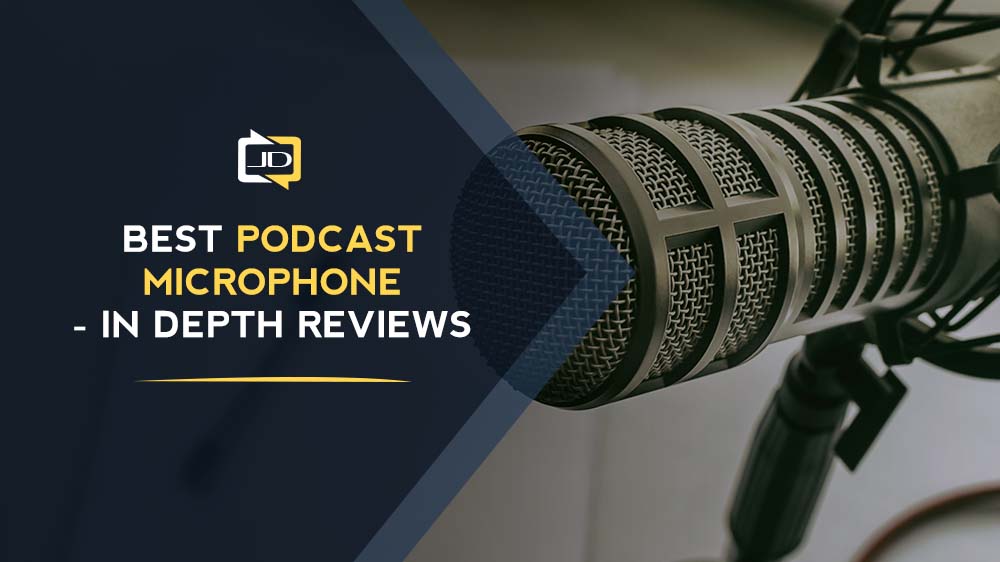


Top Podcast Microphones in 2019
Heil PR-40 Podcast Mic Review
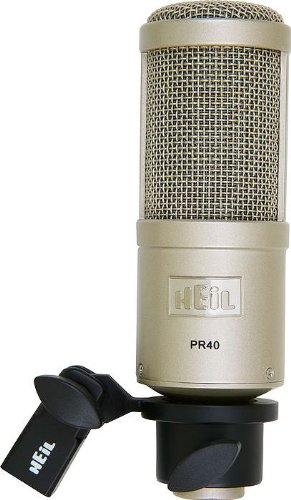



Shure SM7B Review – Best Podcast Microphone Reviews
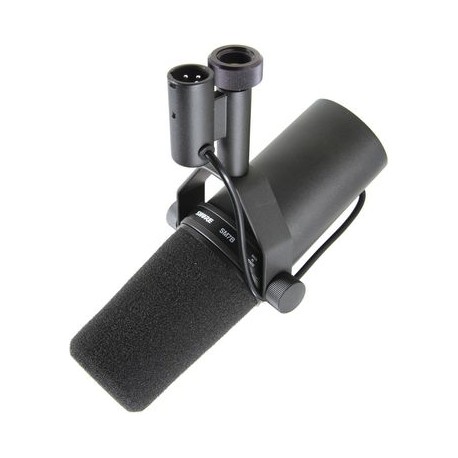



Audio Technica AT2020 Condenser Microphone Review
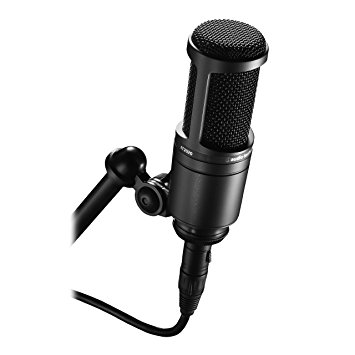

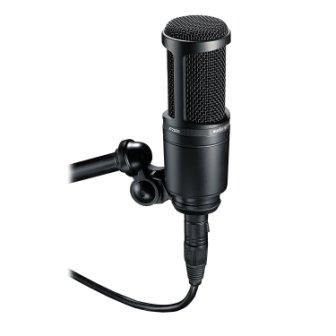

Blue Microphones Yeti Review – USB Podcast Microphone
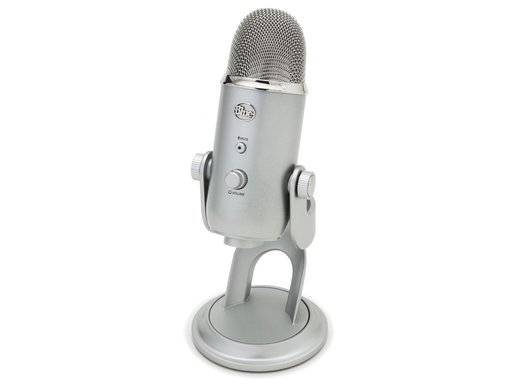

Durable: The microphone has a solid metal body which makes it very durable.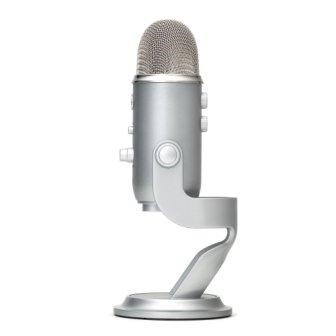

Rode Procaster Review


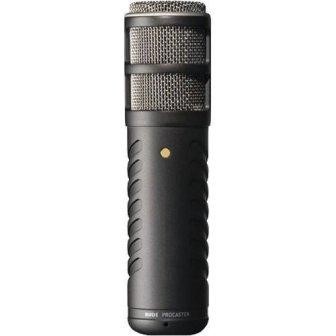

What to look for when choosing a podcasting microphone?
Condensers respond better to nuances the sound waves have. It is a simple mechanical system that has a conductive diaphragm that is thin stretched and is kept close to a metal disk which is called a back plate. These microphones need a power supply and are comparatively more expensive.Conclusion – Best Podcast Microphone
Get a FREE copy of the
7 Secrets to Get MORE LEADS From Your Website
Learn how to boost website conversions and improve content marketing to show measurable results.
Your privacy is our utmost priority. We don’t sell nor share your information to third party providers.






